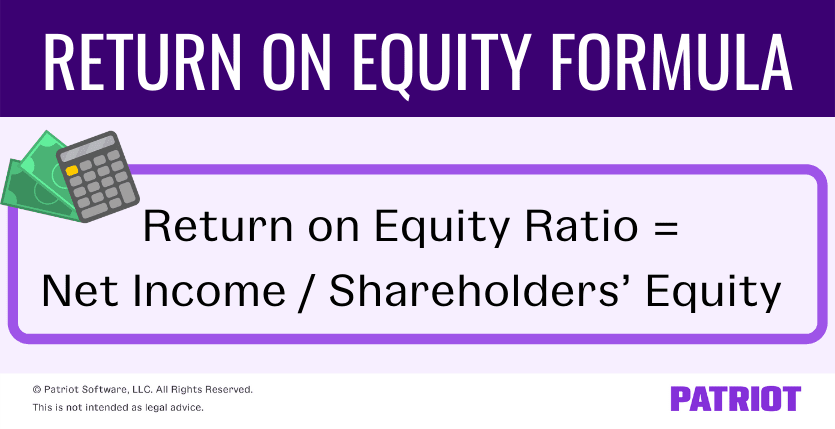When it comes to your business, you want to know if your investments were worth it. To do that, you may need to calculate some business ratios, like return on equity. But, what is return on equity, and how does it work? And, what is the return on equity formula? Let us give you the rundown on how to find return on equity below.
What is return on equity?
Return on equity (ROE), also referred to as return on net assets, is a financial ratio that tells you how much net income your business generates from each dollar of shareholders’ equity. Essentially, ROE measures your business’s profitability in relation to shareholders’ equity.
Your ROE shows your company’s ability to turn equity investments into profits. And, it helps investors understand how efficiently your business uses capital to generate profit.
To calculate your ROE ratio, you need your income statement and balance sheet to find your net income and shareholders’ equity.
Return on equity vs. return on capital
What’s the difference between return on equity and return on capital (ROC)? Return on capital looks at both debt and shareholders’ equity. Return of equity just looks at shareholders’ equity.
To calculate return on capital, you need to divide net income by shareholders’ equity plus your debt:
Return on Capital = Net Income / (Shareholder Equity + Debt)
What can ROE tell you?
Your return on equity ratio can tell you a lot about your business. You can use your ROE calculations to:
- Estimate sustainable growth rates
- Pinpoint excess debt
- Find inconsistencies
- Tell you the business’s profitability
- Make adjustments in the future
Although return on equity can give you a lot of insight on your business, it does have its limitations. A high ROE may not always be positive and may indicate issues, like excessive debt. ROE can also be manipulated easily and can be a misleading metric for new businesses. Keep these limitations in mind when calculating your ROE.
Use other metrics, like return on investment and return on assets, along with your return on equity to analyze your company’s financial health.
How to calculate ROE (return on equity formula)
The calculation of ROE is a pretty straightforward process. To learn how to find return on equity, use the return on equity equation:
Return on Equity Ratio = Net Income / Shareholders’ Equity
To get a percentage when calculating ROE, multiply your total by 100.
You can find net income on your income statement. To calculate net income, subtract expenses and cost of goods sold from your revenue.
To find shareholders’ equity, look at your business balance sheet. You can calculate shareholders’ equity by subtracting your total liabilities from your total assets.
If your company has a net loss or negative shareholders’ equity, you should not calculate return on equity.
Return on equity example
Let’s say your company has a net income of $12,000 and shareholders’ equity of $80,000. Use the ROE equation to calculate your company’s return on equity for the period:
ROE = $12,000 / $80,000
Your return on equity is 0.15 or 15%.
Now, let’s say your net income increases during the next period to $16,000 and your shareholders’ equity remains unchanged.
ROE = $16,000 / $80,000
Your ROE for the period is 0.20 or 20%.
High ROE example
Say your new business had a net income of $80,000 and shareholders’ equity of $100,000 for the period.
ROE = $80,000 / $100,000
Your business’s return on equity is 80%. However, other businesses in your industry have an average return on equity rate of 25%. And, it could mean you have more risk with your return if your company takes on excess debt to generate a higher profit.
Remember, having a higher ROE can be good. However, sometimes it can indicate issues with your business.

Return on equity interpretation
What is a good return on equity? In most cases, the higher your return on equity, the better. Investors want to see a high ROE because it indicates that the business is using funds effectively.
Generally, a return on equity of 15-20% is considered good. However, a healthy ROE can vary depending on the business’s industry.
Do research to find out the average return on equity for your industry. That way, you can see how you stack up and if you need to improve your ROE ratio.
This is not intended as legal advice; for more information, please click here.




